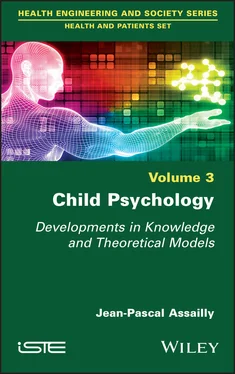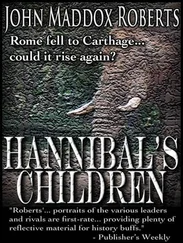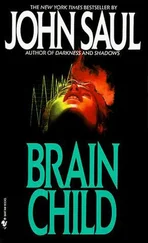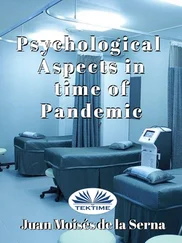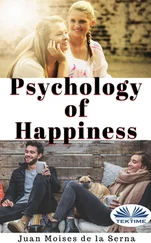1 Cover
2 Title Page Health and Patients Set coordinated by Bruno Salgues Volume 3
3 Copyright First published 2022 in Great Britain and the United States by ISTE Ltd and John Wiley & Sons, Inc. Apart from any fair dealing for the purposes of research or private study, or criticism or review, as permitted under the Copyright, Designs and Patents Act 1988, this publication may only be reproduced, stored or transmitted, in any form or by any means, with the prior permission in writing of the publishers, or in the case of reprographic reproduction in accordance with the terms and licenses issued by the CLA. Enquiries concerning reproduction outside these terms should be sent to the publishers at the undermentioned address: ISTE Ltd 27-37 St George’s Road London SW19 4EU UK www.iste.co.uk John Wiley & Sons, Inc. 111 River Street Hoboken, NJ 07030 USA www.wiley.com © ISTE Ltd 2022 The rights of Jean-Pascal Assailly to be identified as the author of this work have been asserted by him in accordance with the Copyright, Designs and Patents Act 1988. Library of Congress Control Number: 2021947915 British Library Cataloguing-in-Publication Data A CIP record for this book is available from the British Library ISBN 978-1-78630-423-0
4 Preface
5 1 Interdisciplinary Themes 1 Interdisciplinary Themes Before addressing the evolution of knowledge in each area of child development, we thought it would be useful to point out the major themes that run through our discipline and guide the work in various fields.
1.1. The question of prediction 1.1. The question of prediction Behavioral genetics, like psychoanalysis, looks for causality in the child’s past in different ways, but can we predict the child? The retrospective approach can even prescribe, because by predicting too much, we end up creating “fate neuroses”, with prophecies ending up realizing an unfavorable future for the child.
1.2. Development concepts 1.2. Development concepts Two major development models have always been in conflict: development in stages and continuum development. In the stage model (Piaget, Freud), the development of the child’s intelligence or sexuality proceeds in chronological stages, from an initial state to a final state, each stage building on the previous one. In the continuum model (Wallon, Zazzo), the stages exist only in the mind of the observer, but the development for the subject himself proceeds progressively, from birth to death. Does this “ continuum or stages” debate still make sense? Piaget’s stages, or “staircase” model, from the first sensorimotor intelligence step to the final abstract intelligence step, is challenged today, especially in the work on newborns. In this book, we will see that some acquisitions are much earlier than Piaget thought and that the development of intelligence is not linear. Another more recent model is Siegler’s “waves” model: the newborn has various cognitive strategies at his disposal from birth that compete to understand the world; he therefore launches them like overlapping waves to arrive on the shore of understanding. With experience, and depending on the situation, the child will use one strategy or another. We can also evoke the progressive stabilization of synapses, learning by loss, by inhibition or Bachelard’s “philosophy of no”; the child’s neurocognitive development takes place through a multiplication and then pruning of the connections between neurons, hence a reduction in the brain’s gray matter. This pruning has been described by Changeux (1983) as a selective stabilization of synapses by a “neural Darwinism” mechanism; this maturation takes place in successive waves according to the areas of the brain: first, the regions associated with basic sensory and motor functions, then, up to the end of adolescence, the regions associated with higher cognitive control (notably, inhibitory control). The child also learns to inhibit strategies through experience, imitation or instruction from others. This leads to a nonlinear development model made up of learning curves revealing explosions, collapses and turbulence. Functional magnetic resonance imaging (fMRI) allows the visualization of brain dynamics corresponding to the activation/inhibition of cognitive strategies at different ages (macrogenesis) or during learning at a particular age (microgenesis).
1.3. To what extent is a dialog or coming together possible between developmental psychology and psychoanalysis? Between the observable and the repressed 1.3. To what extent is a dialog or coming together possible between developmental psychology and psychoanalysis? Between the observable and the repressed Psychoanalysis and developmental psychology have been the two main avenues for approaching the mental functioning of children. Psychoanalysis operates by reconstructing clinical data obtained during the treatment of children or adults. Developmental psychology seeks to highlight individual differences through observation or comparisons of groups of children, or by studying their developmental trajectories. The psychoanalytical approach to children, which is often therapeutic, focuses on a small number of cases, while the second approach is more experimental and based on statistics. Are the two approaches completely irreconcilable, or is a coming together, a dialog, possible? Some psychoanalysts do not think this dialog is possible, such as André Green, who spoke of the “true child” of psychoanalysis deduced from reconstructions and the “real child” of observation, where it was not possible to reach what was repressed. Nevertheless, other authors, such as Pierre Fédida, desire a “unified science” of development, where the results obtained by either of the approaches can be enlightened by the other. Attachment is one of the most successful examples of the dialog between psychoanalysis and developmental psychology. This theme has brought together approaches as diverse as Bowlby‘s theory of attachment (presented later in this book), Lacan’s family complexes, Bion’s maternal alpha function, Winnicott’s good enough mother, Brazelton’s competence of the baby in communicating with its environment from birth, Lebovici and Golse’s transgenerational mandate, Balint’s primary attunement and Stern’s interpersonal world of the infant. Between Bowlby’s theory of attachment and Melanie Klein’s objectal relations theory, a coming together is possible and was developed by Didier Anzieu with his “ pulsion d’attachement ” and “ Moi-Peau ” concepts.
1.4. Between psychology and epidemiology, developmental psychopathology 1.4. Between psychology and epidemiology, developmental psychopathology Unfortunately, due to lack of time and interest, psychoanalysts do not read articles on behavioral genetics and behavioral geneticists do not read articles on psychoanalysis, not even those about particular behaviors, alcoholism or delinquency. Yet these two bodies will influence generations of pediatricians, specialized journalists and therefore parents. Ideally, we need to take a step back, to look at the “big picture”, to consider what connects and what does not mutilate knowledge, as Edgar Morin says. We have evoked (Assailly, 2007) the idea of a “river thought”, that is, a thought capable of carrying all the alluvium that is brought to us by the currents of thought on the child. This “river thought” is one of interaction: from the first cell division, each fact, each biological, psychological or sociological event defines us; some weigh very heavily, such as the early relationship with our mother; others, very little, such as a temporary family stress, but the approach must integrate all these elements For example, what can epidemiology (the science that studies phenomena at the population level) contribute to psychology (the science that studies phenomena at the individual level), and vice versa? In fact, one needs the other: epidemiology needs the observations of psychology in order to understand, within the broad variability of human behavior, what does or does not emerge from pathology; to launch hypotheses on the relationships between the problems of children and the factors that explain these problems, to understand how what it calls “risk” or “protection” is constructed.
Читать дальше
